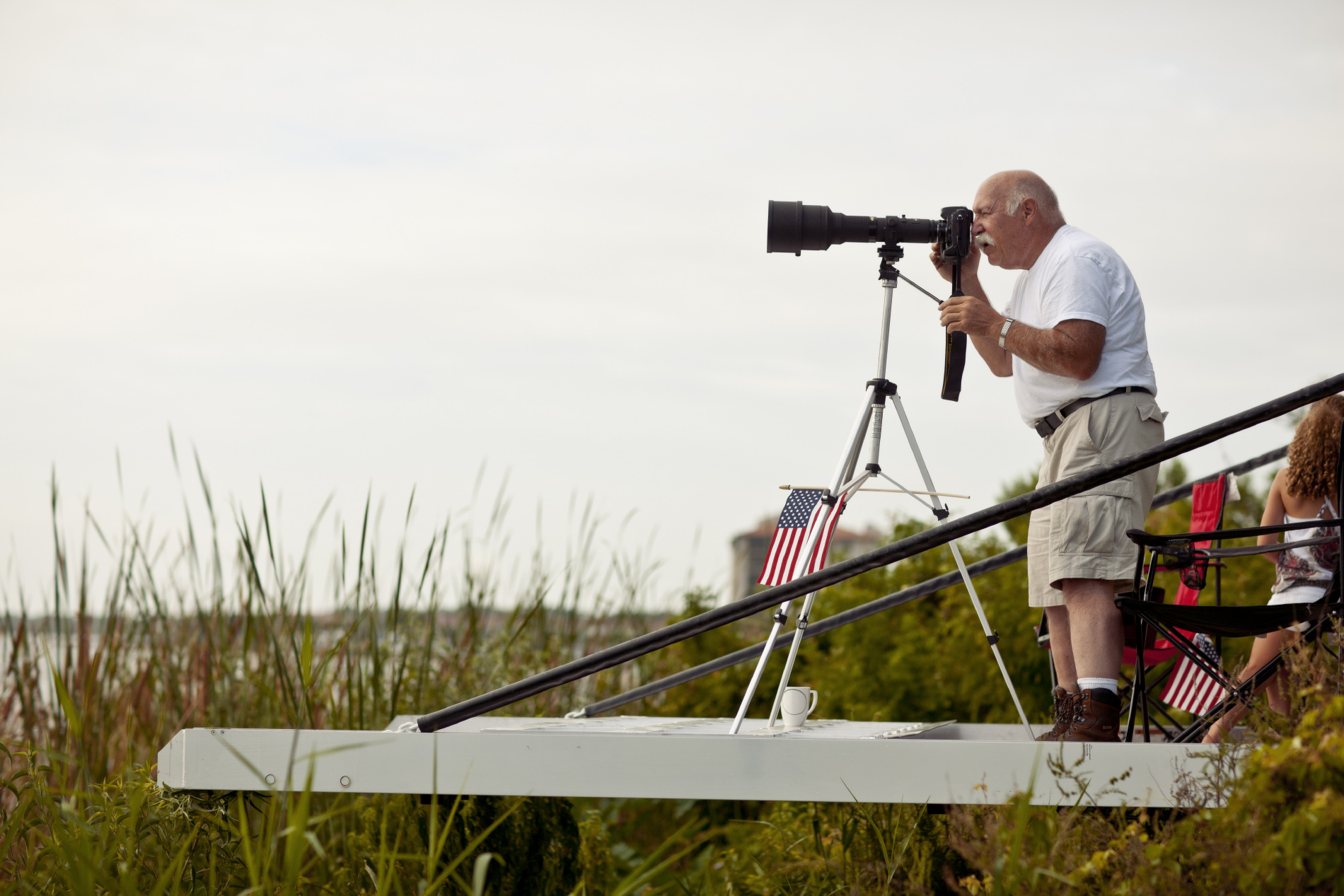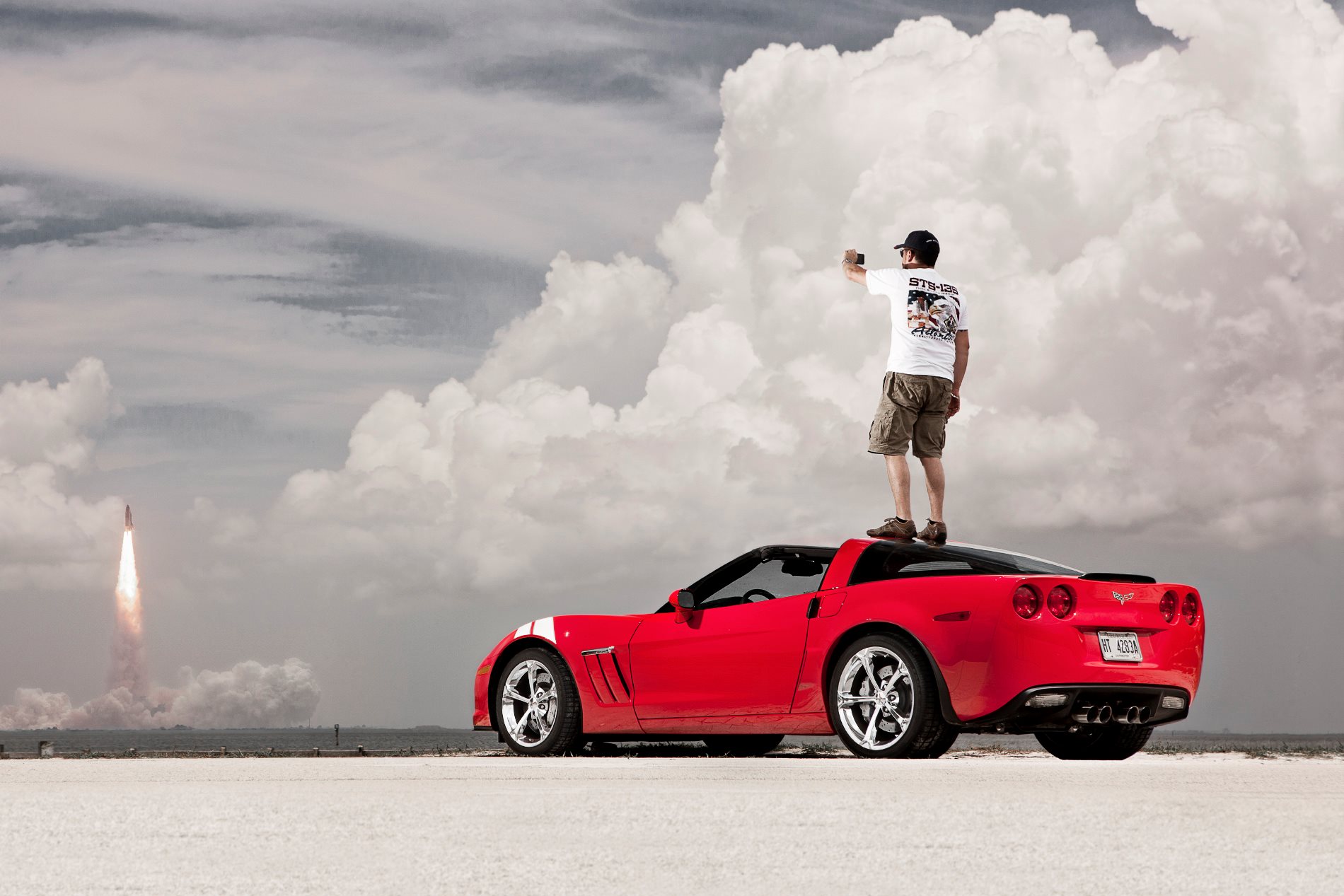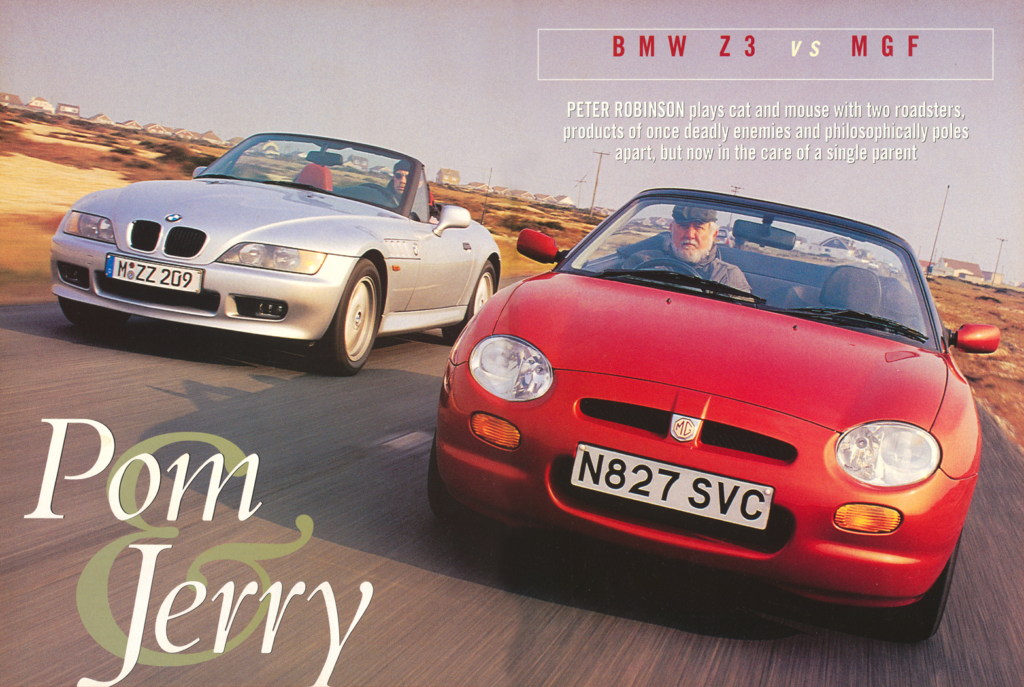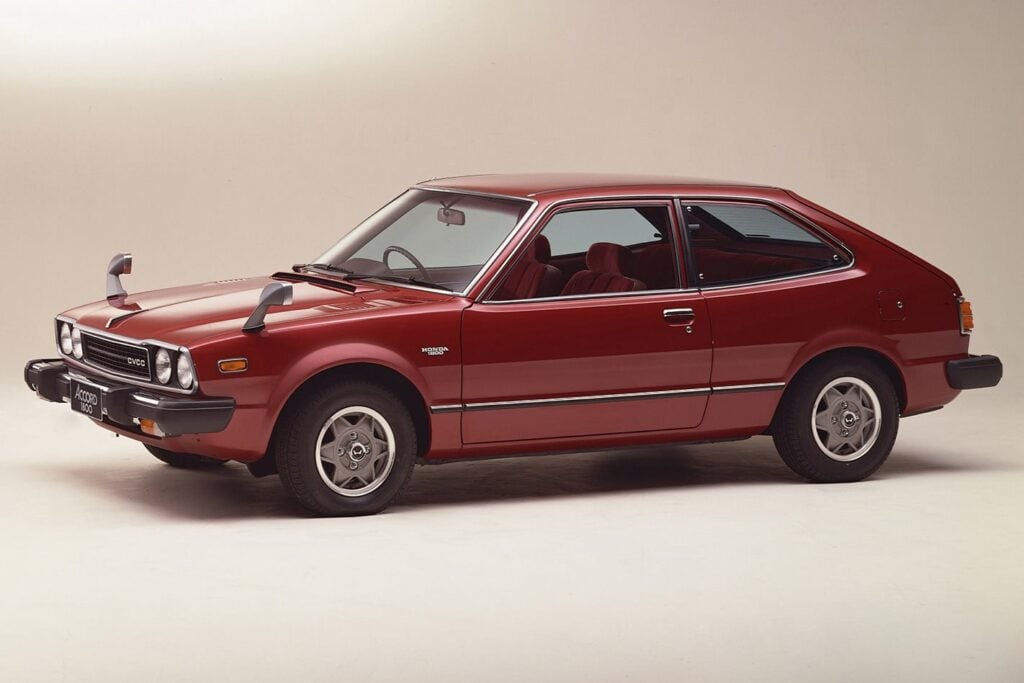Space shuttle Atlantis reportedly unleashed the force of 60,000 Corvettes when it took off on its recent final mission. Glenn Butler was there with just one, but still had a blast.
I was a kid the day Skylab fell to earth in 1979. At my primary school, we followed the planned re-entry, the expected splashdown in the Indian Ocean … the actual impact across a wide swathe of southern West Australia.
The concept of travelling and living in space blew my young mind wide open, expanding my horizons well beyond the few suburbs I could reach on my BMX. An adult mind would struggle with such a monumental existential recalibration, but a child embraces it without question or fear.

Two years later the space shuttle Columbia blasted off on its maiden voyage from Kennedy Space Center on Florida’s Cape Canaveral. Newspapers heralded the world’s first reusable space plane as a forerunner to intergalactic 747s that would take us to new worlds. I watched the launch on TV, my dreams riding shotgun with the crew as they blasted off into the Final Frontier.
At its core, the space shuttle is a mechanical beast of burden, transport for people and possessions. But, just like a car, it’s more than that: an explorer of far horizons, a travelling companion, a dream machine. Much like my dad’s VC Commodore to an eight-year-old, though on a different scale of operation.
So, for a car fan who grew up with the space program, I had to go to the space shuttle’s 135th and final launch. And it had to be in a Chevrolet Corvette, the car astronauts drive.
T-minus one day

The trip starts early morning on Ocean Drive, Miami’s South Beach boulevard, the Corvette’s familiar 6.2-litre V8 growling at the seagulls picking trash off the now-deserted street. Last night this Art Deco restaurant strip resembled an MTV music video; a thumping and gyrating, pumping and sweating mass of humanity all vying for attention on a humid 36-degree evening. Serious cash cruised the strip: Bentley convertibles, Lamborghinis, Ferraris, Maybachs, Maseratis and even a Rolls-Royce. All pimped. All piloted by guys with golden grilles and, in the passenger seat, sultry girls with criminal curves in skin-tight dresses. A world away from the space geeks and astronauts 350km north …
Another party town, Fort Lauderdale, disappears beneath the Grand Sport’s fat rubber. Like the relationship between astronauts and Corvettes, the Grand Sport model traces its roots to the 1960s and Corvette’s racetrack heritage. Think of it as a Clubsport; wider tyres and track, more aggressive suspension and brakes, all in the name of dynamism. Heritage stripes on the front quarter panels are a giveaway, as are the chrome alloys beneath and the delicate lip spoiler on the tail. The GS is effectively a bridging model between stock C6 ‘Vettes and the ballistic Z06 and ZRl. In America it costs US$55,045 – bugger-all for a 4.0-second car capable of lapping Virginia Raceway faster than a Porsche 911 Carrera S, according to Car & Driver magazine.

I’m experiencing little of the ‘Vette’s prowess, however. Florida roads don’t follow the coastline; instead the coast is remodelled to fit the road. I do find one quiet backroad to play with the throttle’s intimacy and the ‘Vette’s 305-section rear tyres. The Corvette’s G-meter peaks at 1.1g, well short of the shuttle’s 3G from take-off until the solid rocket boosters are jettisoned two minutes in. My personal record is 5G a few years back in a Russian training jet. I blacked out, my consciousness winking out like an old television’s picture. That flight was a dream achieved, though its velocity didn’t beat the wind-assisted 1100km/h I once saw on a commercial jet’s in-flight info screen.
We drive towards Orlando, the capital of Orange County and Florida’s third city, 70km inland from Cape Canaveral but with the closest hotel room I could secure. A million space fans are expected on the coast, looking out across the same body of water into which the Challenger’s crew capsule crashed in 1986. That was the year I got my car licence and had my first car crash. I lost control for a couple of seconds, though it felt far, far longer. Later that year I read the shuttle’s crew cabin had been found intact despite the explosion 73 seconds after take-off, suggesting they were probably alive for the three-minute free-fall into the ocean.
A few of the 200 satellite radio stations buzz with shuttle talk. Doubt remains over the launch scheduled for 11:26am the next day. Tropical thunderstorms and sullen clouds besiege Florida, and are forecast to continue. NASA says there is a 70 percent chance of “no-go” (do they express the odds backwards to deliberately dampen expectations?) dropping to 60 percent the next day and 40 percent the day after, when I’m booked to fly home.

T-minus 6 hours
Dawn is an hour away as I thumb the ‘Vette into life. It’s already 27deg C, and humid. I’m sweating in shorts and a T-shirt thinking about four astronauts in their big, bulky space suits. The ‘Vette’s satellite radio delivers NASA’s latest launch update. Still a 70 percent no-go. The Corvette’s sports seat numbs my left leg; it lacks underthigh support and is too soft elsewhere. Still, how would I go squashed into a shuttle seat as it climbs through the atmosphere to a 380km orbit? How would it feel to cover 7.7km every second, 27,160km/h, or Mach 23? How would my nerves cope with being so far from home, at the very end of a fragile cord of technology and equations?

T-minus 5 hours, 25min
Gridlock. At 6am. The highway into Titusville, the town with the best view, is a parking lot and we’re still at least 16km away from it. Panic nibbles my nerves. Will I make the launch? Will there even be a launch? For the first time, Twitter proves itself useful: the feed #spaceflightnow reports that fuelling was completed overnight, though STS-135 is still 70 percent no-go. I double back to strike the coast road farther south, hopeful of following it into Titusville.
T-minus 4 hours, 18min
Titusville. People and cars cover the roadside and the centre strip. Picnic blankets drape SUV roofs, front yards are commercial parking lots with some entrepreneurs charging $50, which late arrivals will pay. We park at a condemned house. The synergy is not lost on me.

Standing on the balcony peering east across the water to the cape, the launch pad is visible, the shuttle barely, its rust-coloured fuel tank and launch tower more prominent through the heat haze. Binoculars bring it closer and I strain to see movement on the tower, but it’s like looking for fleas on an ant. It’s real. And I’m here to see it go. If it goes. Heavy clouds blanket the sky.
T-minus 3 hours
The crowd stretches forever and more people are coming. Every space that’s not a road is claimed. Parkland separates the road from the water, but today it’s a parking lot and campground. Brandon’s an Aussie driving round America in a rented Challenger and he’s having a beer for breakfast. He got here two days ago, so is three rows back, but the gentle slope allows an unobstructed view. Next to him is Gary, a semi-retired concrete company owner. It’s his fourth launch “and none of those went off on time”. He’s backed his custom-built camper – a converted semi-trailer – out over the water. The liftgate serves as a first-class viewing platform, while the interior has been fitted out as living quarters for him and his younger girlfriend, and a garage for his helicopter. Live the dream, brother.
T-minus 1 hour
Crowds of spectators thicken along the dual carriageway, slowly clogging it. Police patrols move people off, trying to maintain a useable road. The crowd mass sucks in until the police leave, then exhale onto the road again.

A blue hole appears in the clouds above. #spaceflightnow reports 40 percent no-go.
T-minus 20 minutes
The police surrender, the road is jammed. So is
the mobile network. My smartphone loses the twitter feed, and then reception. No internet, no mobiles; just like life in 1981 when Columbia first flew. More blue holes appear in the cloud cover. I dare to dream.
T-minus 10 minutes
A huge cheer goes up farther down the crowd, I can only guess why. It’s followed by an impromptu rendition of ‘The Star-Spangled Banner’, which elicits another cheer. My first reaction is that of a cynical Aussie. These public displays of patriotism sit uncomfortably with a bloke from a country where nobody knows the second verse to ‘Advance Australia Fair’. We’re proud of our nation, but not showy like the Yanks. But then, we haven’t put people into space 166 times, let alone on the moon. We haven’t conducted 134 shuttle missions with a 98 percent success rate. We invented the bionic ear, the winged keel and Wi-Fi. But nothing matches the achievement of space travel.
T-minus one minute
The ’Vette’s doors and hatch are open wide, its radio tuned to Launch Control. Incredibly, the voice of shuttle Commander Chris Ferguson sounds calm, running through pre-flight as if it were a shopping list.
It dawns on me just how incredible it is to send people into space and expect them to return safely. So routine that shuttle launches seldom make the news anymore. I’ve spent years recognising companies that design and develop affordable cars like the Corvette, capable of searing acceleration and economy. I’ve flown countless hours round the globe and trust the aircraft builders, the pilots, the airport staff to get me there safely every time. Sometimes even with my luggage.
But the Space Shuttle Program, the Space Transportation System, is magnitudes greater than all other forms of human transport. It’s the audacity that conceived it, the intelligence that realised it (with less computing power than I’m using to write this article), the fastidious experts who make every voyage as safe as possible, the brave astronauts who bet their lives.
The countdown continues.

T-minus 31 seconds
The countdown stops. Sensors have failed to report the retraction of an oxygen vent arm. Radio chatter loses its methodical tempo and becomes a rapid-fire discussion. It’s not going to happen. One million people stand next to me. Nobody makes a noise. We’ve all been building up to this moment for weeks, and nobody wants to come back tomorrow.
Two minutes elapse before NASA restarts the launch. T-minus one minute. The shopping list recital resumes. Calmness in Commander Ferguson’s voice brings relief to a million others who breathe again. This time, the countdown runs right through. When I hear “go for main engine to start” my throat tightens uncomfortably. This is momentous. The engines flame into life and clouds of steam billow, quickly growing larger than the little space shuttle itself. It’s eerie. It’s silent. The lump in my throat grows. Then the radio starts: “T-minus 10… 9…” The crowd joins in, outstripping the controller’s metronomic precision in their enthusiastic haste. When the count reaches zero, Atlantis lifts off. I cheer, swept up by the euphoria. A million heads follow the ascent, craning slowly back in unison. The shuttle pierces a low cloud, a false departure from sight. Forty seconds after launch Atlantis reaches the real cloud ceiling, and disappears. The flames propelling it illuminate the clouds for a few seconds more; a warming and spectacular farewell.
I’m speechless. My voice recorder keeps rolling,
but I don’t know what to say. What words can describe what I just witnessed and will never see again?
This is humanity’s highest achievement, the greatest single effort to expand the boundaries of our existence. And I watched STS-135 launch. The last flight of the space shuttle, 30 years after the first. The end of an era I grew up with. The lump grows again in my throat. The shuttle has disappeared through the clouds. Around me, people pack their cars and turn for home. I’m not ready to leave. It seems disrespectful.
A full minute later the sound reaches me. It starts like wood crackling on a distant fire, building into a sustained wave of thunder that envelopes and shakes me. Every boom and crackle conveys the intensity of a chemical reaction that has propelled 2000 tonnes of space plane, its crew and cargo, tanks and rockets beyond gravity’s tenacious grip. It’s the sound of 60,000 Corvettes.
The Final Frontier just receded a little farther.





